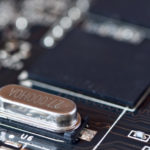Your Ultimate Guide to the Different Types of Oscillators
Have you ever looked down at your watch and wondered how it keeps time so accurately? Or just how possible it is to tune into a station on your favorite AM radio dial? The oscillator is the answer.
Characterized as a circuit, an oscillator generates waveform without mechanical input. Basically, it creates alternating current — a signal (energy) that travels back and forth in intervals.
Different types of oscillators help some of your favorite appliances work. It’s important to know how they function and their uses.
Read the full article here.
Everything You Need to Know About the Quartz Crystal Oscillator
Quartz powered watches are a big part of our lives, yet most of us don’t even know what makes them up or how they work.
If you’re one of those interested in finding out, you’re in luck. Quartz watches are powered by what’s known as a quartz crystal oscillator, which is every bit as impressive as it is tricky.
Thankfully, we know how to break it down and help you understand everything that makes your watch tick. Pretty soon, you could end up being a master watchmaker of your own.
Read on to learn more.
How Is a Crystal Oscillator Used in Medicine?
Do you know what a crystal oscillator is?
Most people don’t but this device is very popular in medical technology. Crystal oscillators are used to power MRI equipment, diagnostic testing and more.
In this article, we’ll explore crystal oscillators and how they’re used in medical technology?
Learn more in this article.
Which Clock Oscillators Are Best for Aerospace?
When you’re working in the field of aerospace engineering, you need to know the gear you are using will last. So when it comes to clock oscillators, only the best will do.
The problem is, there are so many to choose from that finding the right one could be difficult.
So what do you do? Well, for starters, you could read through this article.
Here you can find a list of a few oscillators that will do the job right, so you won’t have to worry about searching around yourself.
Let’s get started.
How a Quartz Crystal Oscillator Can Increase Frequency Stability
When you choose a new oscillator, you want to make sure that you’re getting the highest quality possible. Frequency stability is one of the most important factors to consider — and when it comes to frequency stability, a quartz crystal oscillator will always be your best option.
There are lots of benefits to using a quartz oscillator, whether you’re building a clock or working with radio frequencies. The biggest advantage is its high-frequency stability, or how long it’s able to provide a constant frequency.
So how can a quartz oscillator increase your frequency stability?
Read on to find out.
Top 5 Common Crystal Oscillator Applications
Imagine that you have the power to go back in time. On a whim, you prevented the discovery of the piezoelectric properties of quartz by brothers Jacques and Pierre Curie. When you go back to the future, what will you see?
In this dystopian future, you wouldn’t be reading this article, at least in digital form.
Most technology today rely on crystal oscillators. While the quartz watch is the most recognized crystal oscillator application, in today’s world, crystal oscillators are found everywhere.
If crystal oscillators were not invented, what technology will you miss out on? Read on to find out.
Everything You Need to Know About VCXO Oscillators
If you are looking into frequency control products, it’s important that you get your hands on the best supplies possible.
To this end, you will need to learn a little bit more about oscillators.
There are many different types available — to include Voltage Controlled Oscillators (VCXO).
There are many contractors that deal in VCXO components, so you’ll need to understand the key points.
For a primer on VCXO, read on and consider these points.
An Overview of the TCXO Oscillator
Crystals have long been used in watches and clocks because of the high level of dependability and accuracy they have. Crystal based oscillators like a TCXO use a vibrating crystal to ensure that electrical signals remain precise. They are a stabilizing tool that can help ensure a precise clock signal when included in digital circuits.
Weather, humidity, air pressure, or vibration can upset the accuracy of the frequency produced by crystals. That’s where temperature-controlled crystal oscillators (TCXOs) come in. They can help ensure a level of short-term stability during moments of interference.
To find out more about TCXO-based oscillator systems, read on.
The OCXO Oscillator: Everything You Need to Know
From mechanical vibrations and heat build-up, it’s time to choose stability over the status quo crystal usage. Here’s how an oven-controlled crystal oscillator can offer you optimal performance and a stable frequency:
Over-controlled crystal oscillators are used in situations that need the highest degree of stability. The OCXO is also called a temperature-stabilized crystal oscillator.
There are a few OCXO options that show a very high degree of stability, even as the outside temperature drops and rise at varying degrees. The oven-controlled crystal oscillators come in a bunch of different styles and packages. You’ll be able to find the perfect fit you.
Each package will have a different cost based on the type of oscillators in the bundle.
The Advantages of a Crystal Oscillator
 Do you prefer a quartz watch or a mechanical watch? You might hear some watch aficionados say that quartz watches have no soul or artistry. But one thing that they can’t deny is the superior accuracy of quartz watches. The secret to the accuracy of quartz watches is none other than the quartz itself. The quartz is the centerpiece of a crystal oscillator inside the watch. This electronic circuit produces precise electrical oscillations from the quartz’s piezoelectric property. This handles the clock’s timing signal.
Do you prefer a quartz watch or a mechanical watch? You might hear some watch aficionados say that quartz watches have no soul or artistry. But one thing that they can’t deny is the superior accuracy of quartz watches. The secret to the accuracy of quartz watches is none other than the quartz itself. The quartz is the centerpiece of a crystal oscillator inside the watch. This electronic circuit produces precise electrical oscillations from the quartz’s piezoelectric property. This handles the clock’s timing signal.
There are other types of electronic oscillators such as the RC and LC oscillators. In timing circuits, crystal oscillators have the edge. Learn more about the advantages……
3 Factors That Affect Oscillator Frequency Stability

Your windows are down, your FM radio blares AC/DC at the highest volume, when all of a sudden, right in the middle of the guitar solo, you hear the sleep-inducing sounds of NPR. Don’t worry, you’re not going crazy. You’ve just encountered drift, an unwanted offset of an oscillator’s ideal frequency.
Drift often points to negative frequency stability. It’s not a big deal when it comes to radio broadcasts, but it plays a critical role in radar and satellite accuracy, where there’s little room for error.
But what affects stability in the first place? Many factors have a hand in oscillator stability. We’ve picked out the top three culprits. We’re going to show you how they affect stability and what you can do to control them.